Every guy on the planet owns at least one item of military-inspired men's clothing. And no, I'm not just talking about cargo pants and tactical vests.
It turns out a lot of everyday civilian clothing actually has a long-forgotten military back-story.
As an ex-marine myself, it's always fun to help other guys discover their secret combat clothing and bring out their inner-soldier.
So here are my top 11 military-style pieces that you probably didn't know have seen combat:
- Desert/Chukka Boots
- Wristwatches
- The Blucher Shoe
- Aviator Sunglasses
- Chinos
- T-Shirts
- The Cummerbund
- Coats and Jackets
- Scarves and Neckties
- Men's Suits
- The Cardigan
#1. Desert/Chukka Boots
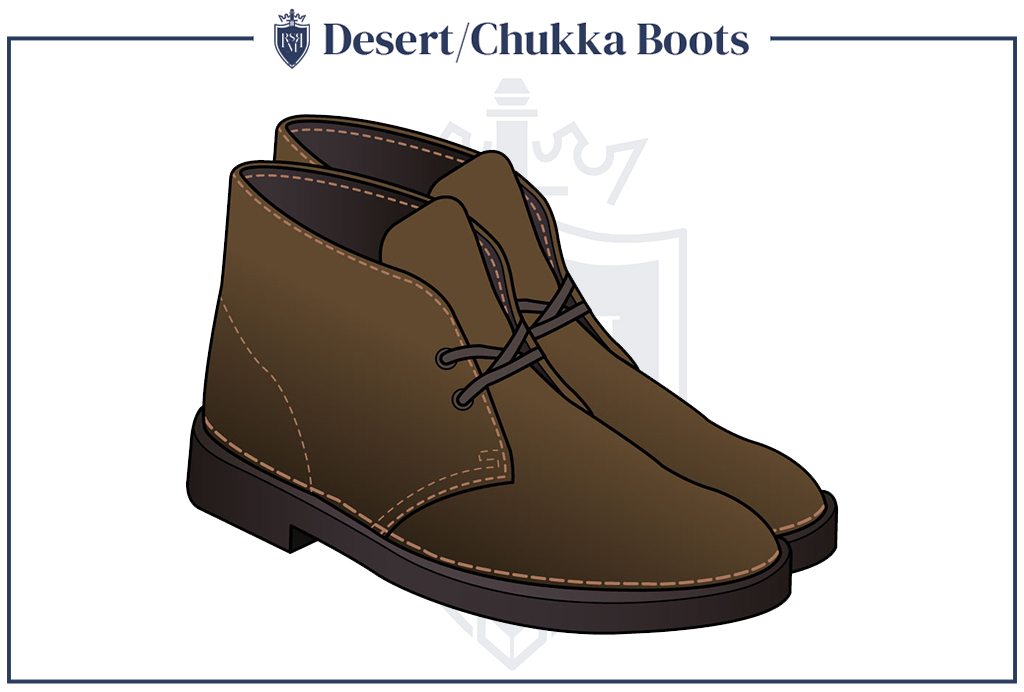
In 1941, an employee of the Clark Shoe Company, Nathan Clark, was deployed to Burma with the British Eighth Army.
While in Burma, he noticed that the soldiers preferred wearing crepe-soled suede boots while off-duty. He found out that Cairo cobblers made this hard-wearing, lightweight and durable boot for South African soldiers whose military-issued boots could not withstand the harsh desert terrain.
Inspired by the simplicity and durability of the design, he went to work to create a boot that quickly gained popularity in Europe and then all across the U.S. The desert boot design evolved from the Dutch Voortrekker, a style of boot that was worn in desert warfare by the South African division of the Eighth Army.
Today's article is sponsored by the guys over at 5.11 Tactical – pioneers of purpose-built tactical apparel, footwear, and gear for those who demand more of themselves. 5.11 field-test, designs, build, and optimizes their products to help their consumers prepare for life’s most demanding missions so they can always be ready.

Click here and save 20% from May 10th to 16th in-store and online as 5.11 celebrates everyday heroes for 5.11 Days.
#2. Wristwatch
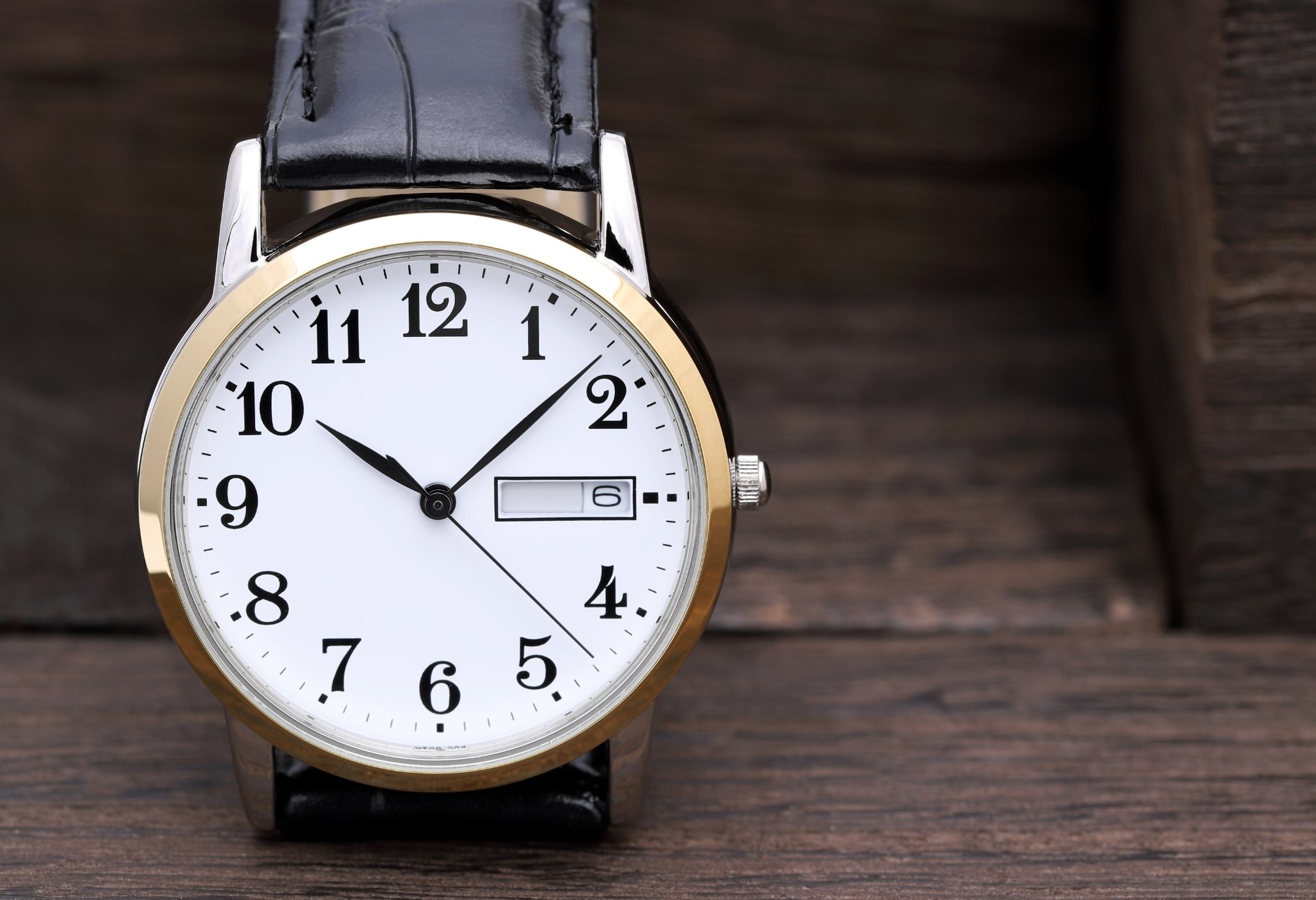
Of all military-inspired men's clothing items, the watch is the only one borrowed from women.
Before the 20th Century, only women wore wristwatches. Society saw them as feminine accessories, worn on the wrist as ornamentation.
That changed in the late 19th and 20th Century wars when the gentleman's pocket watch evolved into the ubiquitous wristwatch. The wristwatch became a strategic tool in World War I as troops synchronized their attack formations based on pre-determined times.
Historians say that the idea of strapping little clocks to soldiers' wrists began during the Boer War. But most commentators agree that World War I secured the wristwatch as a classic piece of men's jewelry.
#3. The Blucher Shoe
During the Napoleonic War, Prussian officer Gebhard Leberecht von Blucher Furst von Wahlstatt noticed his men struggling with their boots.
He commissioned a redesign of the standard-issue combat boot. Developing a more straightforward shoe so his troops could get ready for action quicker. The resulting half boot had two leather flaps below the ankles that could lace together.
The flaps didn't meet at the bottom, and each had opposing shoelace eyelets. The design resulted in a wider opening for the soldier's feet and made them more comfortable.
The two leather flaps allowed for speedy battle prep and could be easily adjusted on the go, making life easier on all of his troops.
Mr. Blucher and his men played a significant role in the defeat of Napolean's Army at the Battle of Waterloo.
#4. Aviator Sunglasses

In 1936, Bausch & Lomb developed sunglasses for pilots to protect their eyes while flying, thus the name aviator.
These specially designed sunglasses gave pilots a full range of vision when battling the glaring sun and enemy fighters. The classic tear-drop shape of these sunglasses completely covered the eyes and offered protection to the entire eye socket.
Aviators have been a part of civilian life for almost as long as they've been around. While the aviator has become one of the most popular sunglass styles for civilians, it remains a staple of military gear in the U.S. military.
Randolph Engineering has been producing aviator sunglasses since 1978 for the U.S. military.
#5. Chinos
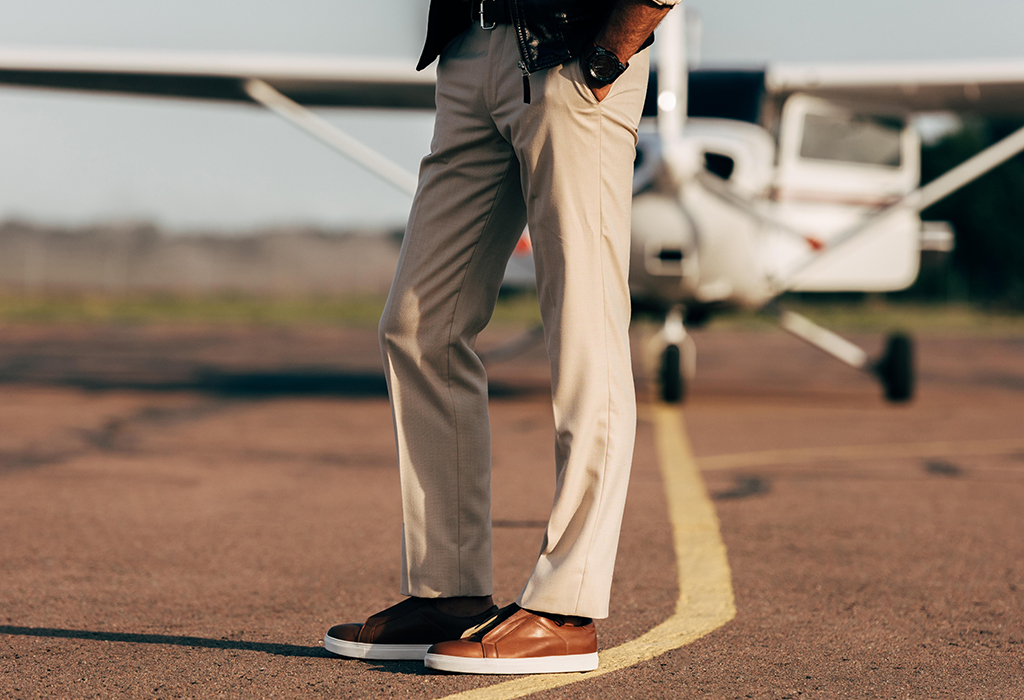
Chinos are versatile pants that have evolved from colonial military uniforms to classic preppy pants.
British soldiers stationed in India wore khaki (Persian for ‘dust') colored uniforms. The modern chino is a direct descendant of this uniform.
The U.S. Army first used khaki uniforms in the Philippines during the Spanish-American war of the 1890s. The soldiers dressed in uniforms made of fabric produced in China.
The Army used the Spanish word for ‘Chinese' (chino) to describe the khaki uniforms.
After the war, ex-troops resumed their studies and sported this new style on campus. Chinos became an integral part of the Ivy League, preppy look.
#6. T-shirt

The t-shirt was a form of underwear in the 1800s. Like other military-inspired men's clothing items, this one remains strong today.
The union suit was cut in half to form a long top tucked into a pair of jeans. It had buttons and was inappropriate when worn uncovered in public.
Things changed with the Cooper Underwear company marketed them as ‘buttonless bachelor undershirts.' The resulting clothing item was more durable, stretchable, and required less maintenance than its predecessor.
The U.S. Navy adopted the pullover cotton tee as part of its regulation uniform, much to the relief of many enlisted young bachelors with limited sewing abilities.
The U.S. Army adopted the undershirt trend during World War I as tens of thousands of army soldiers wore the cotton tee under their uniforms. The troops took the fashion home with them at the end of the war and ensured that the trend evolved into a civilian-style staple.
The word “t-shirt” first appeared in F. Scott Fitzgerald's novel, ‘This Side Of Paradise.'
#7. The Cummerbund
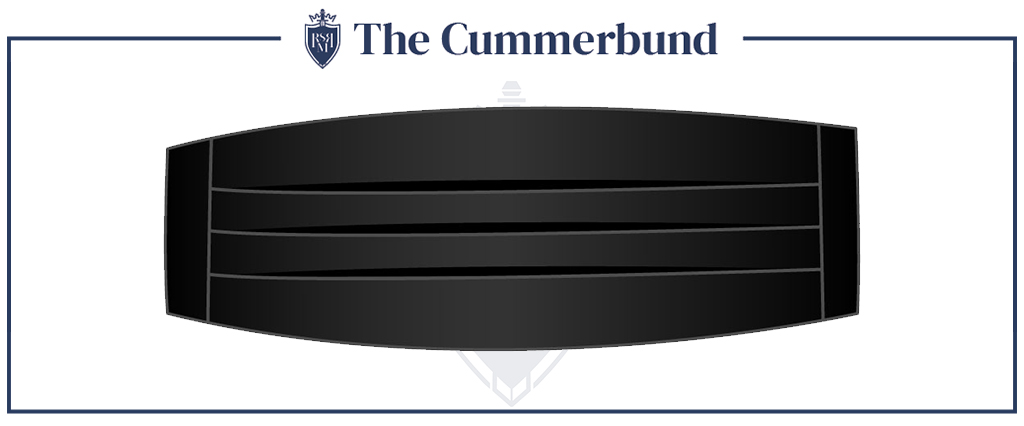
The cummerbund was worn initially as dining wear for British military personnel stationed in India. The locals often wore sashes around their waist called kamarbands (from ‘kamar,' meaning waist).
Due to the heat in India, the British were keen to find a breathable dining uniform and quickly adopted the sash for their dining wear waist covering instead of a vest.
As the tuxedo gained popularity in Tuxedo Park, New York, accessories specific to the formal outfit began to surface. The black bow tie and black waistcoat became the norm. The aristocracy soon borrowed the idea of black cummerbunds as an alternative to the waistcoat.
#8. Your Coats
It is incredible how many different styles of coats could be classed as military-inspired men's clothing. Almost every jacket you have in your closet can reach back to a military beginning. Here are some examples:
- Eisenhower Jacket – A waist-length jacket or blouson, issued in WWII, featuring an adjustable waistband, two breast pockets, a pleated back, fly-front buttons, slash side pockets, and epaulets.
- Field Jacket – In the Vietnam War, the military called for an update of the M-51 jacket. It featured a windproof cotton construction, a drab olive green color palette with multiple chest pockets to store spare ammunition.
- Bomber or Flight Jacket – The A2 Bomber or Flight Jacket was a waist-length leather jacket that featured two front patch pockets and was issued in 1931 to keep pilots warm in the open cockpits.
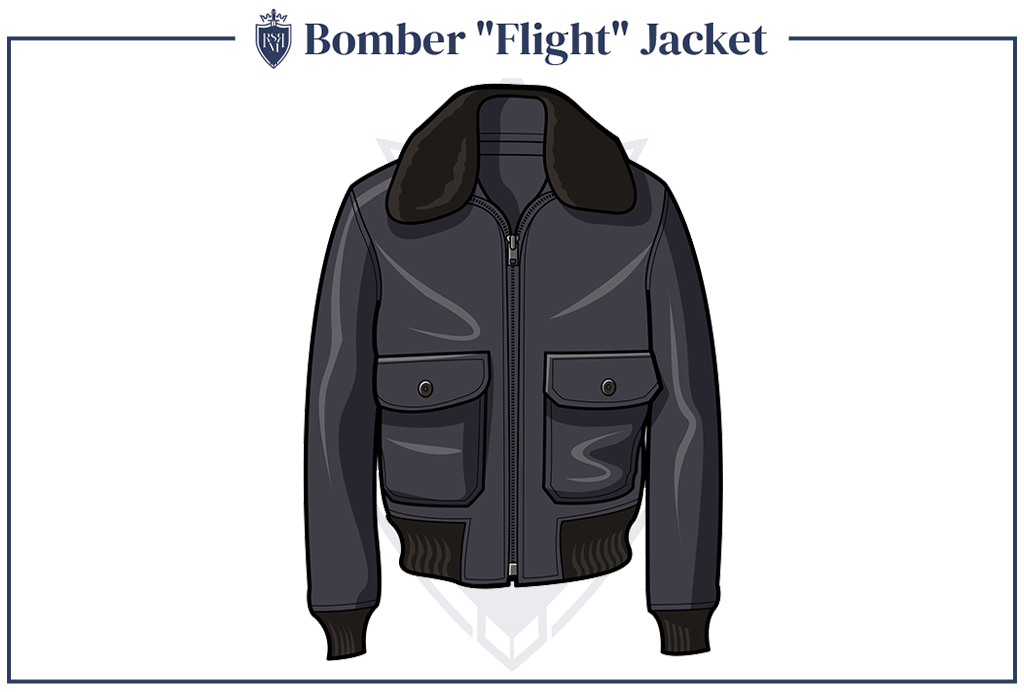
- Duffle Coat – The preferred choice of the British Royal Navy during World War I and II, this jacket is recognizable for its toggle closure; designed for sailors to fasten and unfasten the jacket while wearing gloves at sea.
- Pea Coat – Used by the Dutch at the height of their naval power in the 16th Century, a pea coat features a double-breasted closure with large metal or plastic buttons, a wide notched collar and lapel, and vertical or slash pockets.
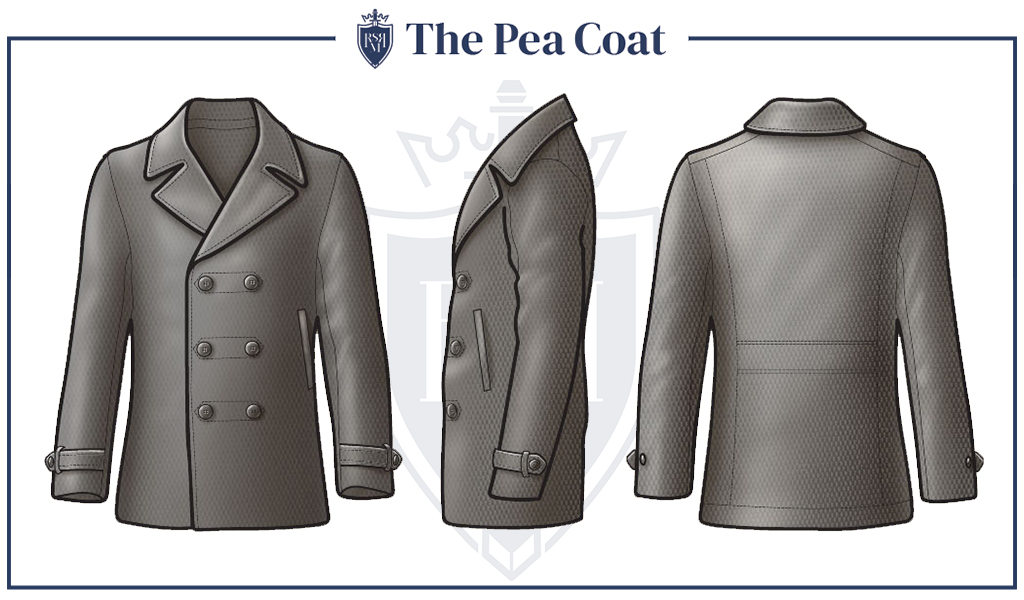
- Trench Coat – Created for the soldiers of World War I by Thomas Burberry, this coat features a double-breasted closure with ten front buttons, a storm flap, wide lapels, and pockets that button-close.
- Fatigue Jacket – The basic uniform for British troops during World War II was a dust-colored khaki jacket with four pockets – two on the hips, two on the breasts, and all buttoned.
- Parka – A parka generally features a fur-lined hood and a zipper closure. The length of the jacket ranges from waist-length to knee-length. The lightweight waterproof nylon and cotton construction kept the U.S. troops warm during the Korean war without obstructing movement.
#9. The Scarf & Necktie

For over 2000 years, scarves identified rank in the military. Now they are one of the most used military-inspired men's clothing items.
From the Terracotta Warriors of China to modern-day desert military units, we see scarves used because they provide value in inclement weather.
Scarves were considered staple winter garments for men during World War I. Both America and Great Britain encouraged the knitting of scarves as a patriotic chore.
Early aviators found that these scarves provided excellent warmth at high altitudes and cushioning for when the pilots had to crane their necks while scanning for other aircraft.
Croatian mercenaries who arrived in Paris during the Thirty Year's War (1618 – 1648) wore bright scarves around their neck for battle.
The French adopted the look in a much looser fashion, and called it “La Croate” or “La Cravate.” It took several hundred years for La Cravate to evolve into the thin strip of cloth we wear today, but it was undoubtedly the forerunner of the necktie.
#10. The Men's Suit

The modern suit can trace its lineage back to uniforms of the French and Russian armies in the Napoleonic era.
Those uniforms consisted of an open, single-breasted blue and white coat, a white waistcoat, white breeches or trousers, and either boots or shoes for the French Army.
For the Russians, it was a dark green, double-breasted coat with a standing collar, white breeches or trousers, boots in the winter, and shoes in the summer.
These two uniforms formed the model for what would evolve into the 20th Century three-piece and double-breasted suit.
#11. The Cardigan
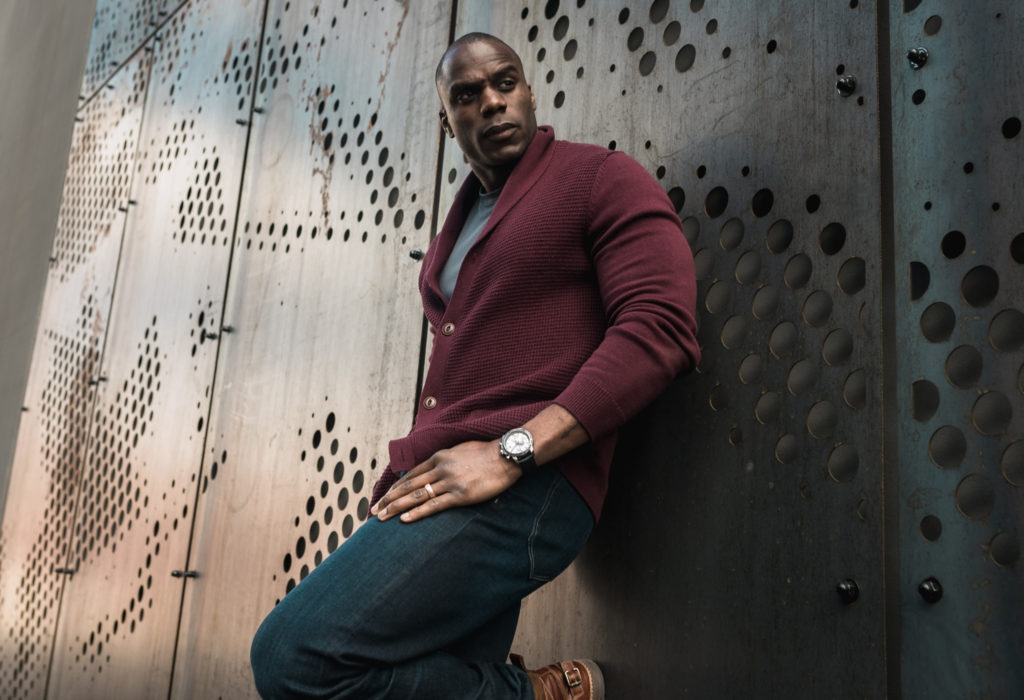
James Thomas Brudenell, the seventh Earl of Cardigan, invented the cardigan, one of the most classic style items with military heritage.
He was a lieutenant general in the British Army. Historian Robert Powyszynski, Sr. states that he was so wealthy and stylish that he would spend £10,000 a year outfitting his regiment in swanky new uniforms.
During the Battle of Balaclava amidst the Crimean War, Cardigan led his brigade to doom in Russia, but he survived. He was honored upon his return to London, and the knitted waistcoat he was wearing (the cardigan) became a hot commodity.
The military is the ultimate testing ground for any timeless style item for men. If it can last a tour of duty, it can handle the rigors of everyday life.
Either way, the legacy of war heroes lives on in your daily wardrobe choices and military-inspired men's clothing.
Click below to watch the video – 7 ICONIC Fashion Trends That Are Surprisingly MILITARY In Origin!
The post 11 Style Items With A Military Heritage appeared first on Real Men Real Style.
0 Commentaires